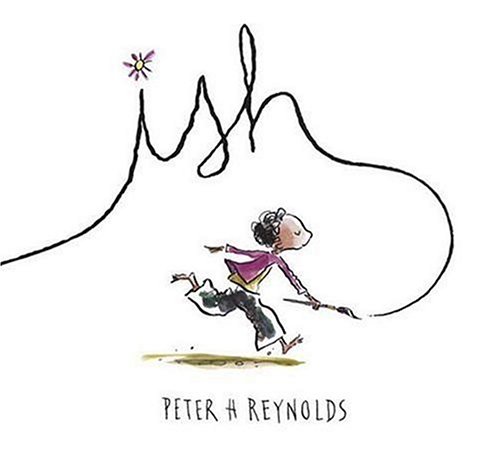The Chronicles of Harris Burdick
Published 2011
If you teach upper elementary and are covering units of study on Fantasy in reading or writing, The Chronicles of Harris Burdick is an outstanding selection for a go-to mentor text! It should be attached to your hip during a fantasy UoS!
In 1984, Chris Van Allsburg introduced the world to The Mysteries of Harris Burdick—a book filled with mysterious illustrations that bordered between fantasy and reality. The illustrations were also accompanied with a title and just one, strange, cryptic sentence—pulling the reader in immediately! (Usually stories are already spinning in a child’s head before they know it!)
Fast forward to 2011—Van Allsburg published an adaptation of Harris Burdick. This time he reached out to fourteen outstanding authors (including Lois Lowry, Kate DeCamillo,LInda Sue Park, Walter Dean Myers, Jon Scieszka, Stephen King and Van Allsburg-to name a few).
Each author was asked to each take one of the Harris Burdick illustrations and compose an equally mystifying and delightfully perplexing short story to go with it.
And thus…The Chronicles of Harris Burdick was created to the delight of us all!
What makes Van Allsburg’s work (all of his books, actually) magical is that fine line that is walked between reality and fantasy that keeps the readers guessing, thinking, wondering, enjoying the magical and the strange.
All the contributing authors in The Chronicles of Harris Burdick created their stories with that same intrigue.
According to Fountas and PInnell’s Genre’s Quick Guide Grades K-8+, ‘high fantasy’ requires a readers (and writers) to:
* Suspend disbelief and understand human and animal characters that could not exist in the real world
* Notice the setting, which is usually an imagined other world.
* Understand characters that have unusual traits or abilities.
* Understand the conflict between good and evil.
* Recognize many elements of fantasy such as the hero, the quest, magical powers, magical objects.
* Recognize and undertand symbolism
* Process complex language that often departs from everyday language.
* Notice universal truths revealed in the story.
Fourteen short stories to choose from to help lift your students' thinking and understanding of fantasy in the ways that Fountas and PInnell describe!!! And all stories created by exceptional, award-winning authors!
The Chronicles of Harris Burdick will help lead, guide, mentor your students through the challenges of reading and writing the genre of Fantasy. Pick one story, delve deeply into it—-or select several stories to use as mentors. The choice is yours--and you cannot miss!
One thing is for sure—once you finish with the book for the day—it will be immediately scooped up by a motivated reader or writer!
Suggested Uses as a Mentor Text:
Reading Workshop Strategies: Questioning, Synthesizing, Inferring, Visualizing
Writing Workshop Strategies: Fantasy writing, Strong leads, Strong Endings, Inspiring Writers, Elaboration,
Chris Van Allsburg website: http://hmhbooks.com/chrisvanallsburg/




